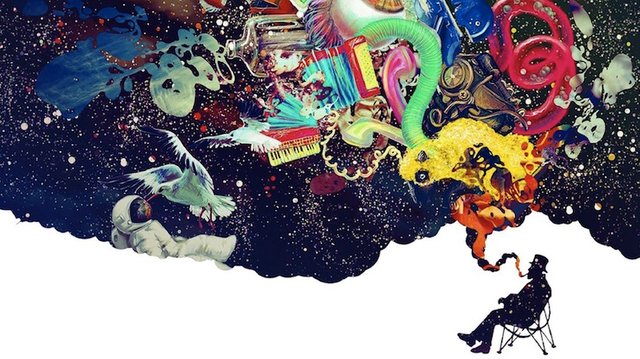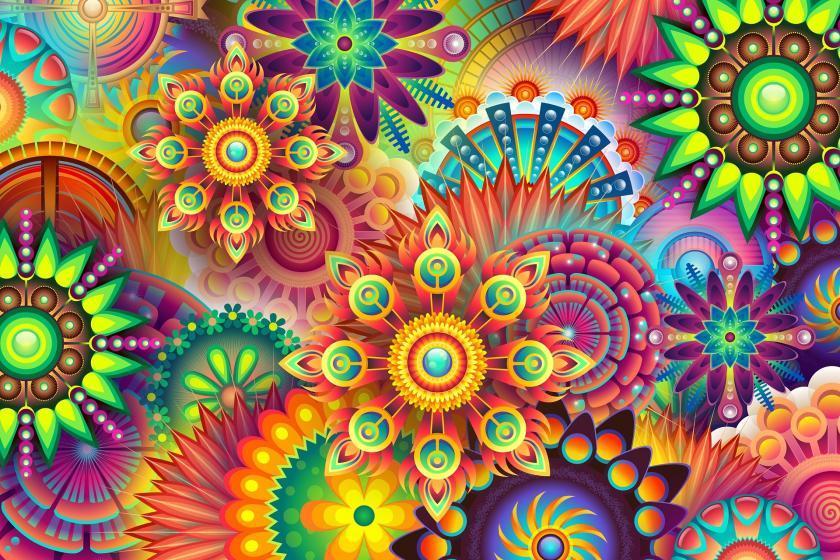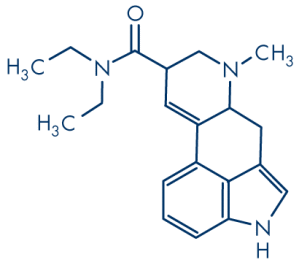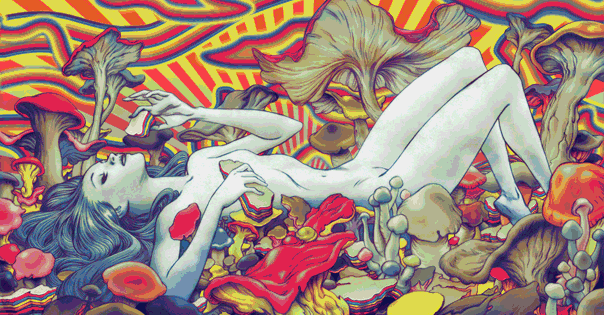How Silicon Valley discovered LSD - Arts&Life News - PART 2
How Silicon Valley discovered LSD - Part2

| While the hippies were taking over Golden Gate Park in the 1960s, Jim Faiman was among a small group of researchers already looking at how LSD could help people be more productive. Today he is revelling in his niche becoming more mainstream. This April, he spoke to an audience of 600 at a bustling conference in the bay Area. He started by asking : "Who here has microdosed?" Hands shot up. Only three or four had not. Leary was dubbed the pied piper of psychedelics; Fadiman is now the pied piper of microdosing. He created the regimen used by many microdosers - 10 micrograms of LSD every three days - in his 2011 Psychedelic Explorer's Guide. He now gets daily and monthly mood reports from 1,800 microdoers.
This anecdotal research is the closest we have to evidence of the effects of microdosig LSD. Fadiman excitedly claims a wide range of positive impacts unusual for any single drug : from squashing the impulse to procrastinate to easing painful periods. But it is far from a large randomised control trial. With anecdotal reports, Fadiman relies on subjects to accurately self-report their experiences. He cannot compare these effects to a placebo or check the exact dose and purity of the LSD. In the early 1960s, Fadiman worked at the International Foudation for Advanced Study with Myron Stolaroff, investigating new ideas. Stolaroff, an engineer at tape recorder company Ampex, had found that LSD made him sharp and inventive. But Ampex refused to incorporate LSD into their product design process, so he left to start the Foundation. Between 1961 and 1965, the pair experimented on hundreds of scientists, researchers, engineers and architects to see if they could solve difficult problems while taking the drug. Many of the subjects had never heard of psychedelics.They were told it was a chance for "heightened creativity" and totally safe. In the morning, they took full doses of LSD, and were invited to lie down while music played. "An architect said he really gave himself a world tour of architecture, visited the Pyramids, the Great Wall of Chia, the Eiffel Tower... He was able to travel and see things more visibly than he thought would be possible," Fadiman tells me. In the afternoon, work began: "When he came to his task, which was a small shopping centre, he said he just felt he was very, very excited by architecture." After months of disappointing the client, the architect had a vision of the building so complete that he could see how many spaces there were in the car park and the size of the bolts holding the beams together, Fadiman reports. And when he drew the final design, the client liked it. |
In other cases, a scientist came up with a theoretical paper on photons, and an early designer of circuits in semiconductors said he was able to lay out the board in his mind and watch electricity surging throught it to see where it broke.
The International Foundation for Advanced Study was shut down when LDS became illegal in California in 1966, the same year th US government banned manufacture or sale of the drug. Two years later, possession of LSD was outlawed by the federal government. John Markoff, a former technology correspondent for the New York Times, wrote about the early experiments in What the Dormouse Said, his book on the relationship between the 1960s counterculture and the PC industry. He is a sceptic, believing that LSD was not a "magic pill" that made the era creative. 
Instead, he believes that it was probably caused by living on the "edge of chaos" in the 1960s. With today's Silicon Valley far from the edge, he believes it is no longer taking the creative leaps it took to create the building blocks of computing. "It is pretty tame," he says. If the tech industry feels the need for enhancements, what about industries being disrupted by tech ? Could workers from finance to retail use LSD to keep up ? |
| Before we all start taking a daily dose of the drug with our breakfast, scientists need to understand more about it. It has been more than 70 years since Swiss chemist Albert Hofmann accidentally discovered the psychedelic properties of LSD, a drug developed from compounds in ergot, a fungus that attacks rye. But because of criminalisation, we have little evidence of how it affects the brain and its potiential for long-term damage.
The US drug Enforcement Agency says LSD has a "has potential for abuse", but does not specifically adress microdosing. The DEA warns that LSD impairs users' ability to make sound judgments, making them susceptible to personal injury. Users can suffer "acute anxiety and depression" for days and even months after a trip, it says. Overdose effects include psychosis and even possible death. DrugWise, a UK non-profit organisation that provides advice on drugs, says there is no evidence of people overdosing on LSD, but that fatal accidents have happened to people while taking the drug. It also warns that it may have implications for people with a history of mental health problems. 
The most significant breakthrough in our understanding came last year with the first ever brain-imaging study of people tripping on LSD. The study was led by Prefessor David Nutt of Imperial College London, who was sacked as an adviser to the UK government in 2009 for criticising policy on drug classifications. The study found that LSD makes the brain much more connected and flexible, with the visual cortex connected to every part of the brain. Its also showed a decrease in blood flow to the "default mode network", meaning there was less activity in the area that is activated when the mind is wandering, not committed to a task. | Barbara Sahakian, a professor of neuroscience at the University of Cambridge, says there is evidence to support the microdosers' theory that LSD improves creativity. "LSD at low doses may produce mood elevation and creativity, primarily by mimicking the effects of serotonin, the chemical in the brain that regulates our mood," she says. It also increases levels of glutamate, which plays a role in learning and memory. But she warns against buying the drug on the black market, where users have no idea what concentration it is or what it is cut with.
Sahakian studies the impact of so-called "smart drugs" such as Mmodafinil, used to enhance performance, and is concerned about the rate of people turning to drugs to boost their productivity, rather than to natural stimulants such as exercise. "What is the pressure going on here that everybody needs to do this ? People are worried about losing their jobs, worried about competition". One of the greatest risks associated with LSD use is, of couse, a prison sentence. In the US, LSD is Schedule I drug. Possession of enough for a hundred microdoses carries a minimum penalty of five years in prison and a fine of up to $2m. In the UK, it is Class A and possession can be up to seven years in prison or an unlimited fine. Many of the microdosers I spoke to obtain their LSD from drug dealers with whom they have a personal connection, and those dealers source it from chemists who manufacture it themselves. Some rely more riskily on the dark web, ordering the drug from an unknown source to be delivered to their house. The culture of the tech industry encourages experimentation - even if that pushes beyond the boundaries of the law. Silicon Valley's libertarians see it as part of their quest for "cognitive liberty". "The most successful companies like Airbnb and Uber have given the middle finger to the regulators. There's a sense that the regulations will catch up," Gail says optimistically. |
Behind a Saxon hunting lodge with three moats, I sit with Amanda Feilding at a garden table. In Oxfordshire, far from Silicon Valley, the Countess of Weymss and March is plotting the future of microdosing. Feilding enthuses as she shows me pictures that excites many microdosers I met in San Francisco. She points at the explosion of colour in the brain on LSD, compared with scattered patches of orange on a placebo. "There's just vastly more communication,"the 74-year old says. "It kind of describes why there's more feelings, more memories associated with communication, more richness of colour, more richness of hearing, a deeper kind of perception".

Feilding has been experimenting with ways to expand consciousness since she left school at 16 to study mysticism. Her most radical attempt was trepanations cutting a hole in her own skull. Feilding first used LSD in the 1960s. She found it could help her concentrate: on high daily doses she could race through the complete works of Nietzsche and Freud, as if "higher up the mountain". Since the 1990s, she has worked with scientists to pursue drugs research with her organisation, the Beckley Foundation, which partnered with Dr Nutt at Imperial on the LSD brain-imaging study. Now she plants to lead a study into the effects of microdosing LSD, working with Nutt and his colleagues again, and potentially other institutions including NYU. Nutt will shortly begin seeking ethical approval for the study in the UK. The participants will complete cognitive tests used to track depression and anxiety, and have their strategic abilities tested by playing Go, the complex Chinese game that Google is using to train artificial intelligence. Could LSD enhance our most human skills like creativity, while artifical intelligence takes over more robotic tasks? I ask, "Absolutely, I totally agree with that," she says. | If positive outcomes can be shown for patients with depression, she would like to push for legalisation - and eventually regulated access for non-medical uses. "We've lost 50 years through criminalisation. It was a lousy, ignorant reaction, based not on scientific evidence but prejudice, media coverage and false stories", she says. "When we finally get to the other side and they become regulated, nobody will ever believe they weren't : it will be just too ridiculous".
Her biggest problem is funding. Many medical research bodies are cautious about backing a project looking into the positive effects of illegal drugs. Trials using illegal drugs are also more expensive due to detailed requirements on how to store and administer them. Si Feilding is turning to Silicon Valley for help. In 2011, her foundation received a donation from Sean Parker, the Napster founder and early Facebook investor, for its drug policy work (though not for research into psychedelics). Now Feilding is starting a "for profit" arm of her foundation. She hopes tech entrepreneurs will invest to do good and to make money : she believes they could start a business making "wonderful cannabis medicines" andopening clinics. When Feilding describes the science behind LSD, she speaks like Silicon Valley inventors talking about their "moonshots", ambitious projects such a self-driving car or private space missions. But microdoing, she believes, could do more for the world than many transformational technologies. "A happier, more balanced species would do more good than getting us to Mars" she said. "How can you do more good than trying to solve some of the problems of the human psyche ?" Hannah Kuchler is the FT's San Francisco correspondent |

Sources :
Text from Life&Arts FTWeekend newspaper
First picture from freedomandfulfilment.com
Seconde picture from Medical Daily
Third picture from Youtube (Hugo Hakvoort)
Fourth picture from PsychoACTIF
Fiveth picture from Thought Pursuits
I love you and love your publications. You are my hero. I want to become like you. You are the strongest I will be happy and grateful to you for inviting me to admire my posts and share them on your page I love you hero
😍😍😍😍
Ahah nice try made me laugth
Really.!! it's great post👌👍✌. Thanks bro😍😃😃
Follow!!😃😃
Good luck✋
Thanks !
Great read and I love the art work on this post.
Thanks for commenting. Yes they are really great, I'm not the owner but all sources are inside ;) Have a good sunday